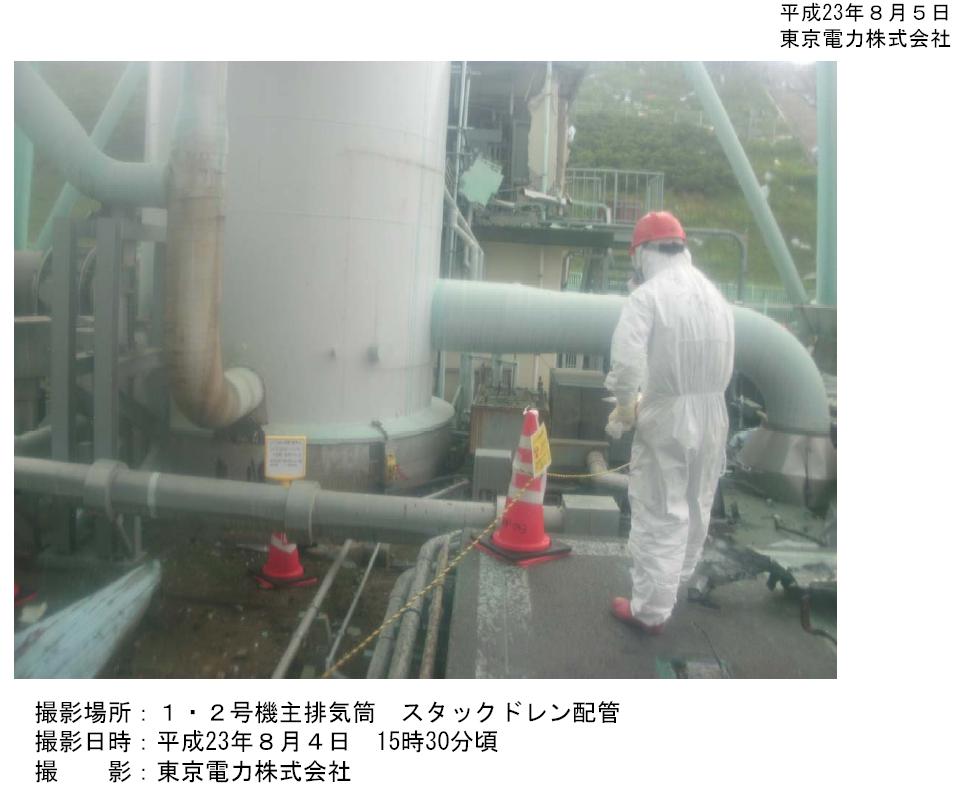– #Fukushima I Nuke Plant: 3.6 Sieverts/Hr at Stack Drain Pipe for Reactors 1 and 2 (EX-SKF, August 4, 2011):
Another solid “sievert” number from Fukushima I Nuclear Power Plant.
Maybe I shouldn’t be writing in sieverts. It minimizes the significance somewhat. It is 3.6 sieverts/hour, or 3,600 millisieverts/hour, or 3,600,000 microsieverts/hour. No humans of any age should be exposed to that kind of radiation, not even the TEPCO workers.
From what I’ve found, only Mainichi Shinbun (only a brief mention) and Nikkan Sports (tabloid newspaper covering mostly sports-related news) carried the news from Kyodo News. (But I couldn’t find it at Kyodo News site.)
Nikkan Sports citing Kyodo News (8/4/2011):
????????????????????????????????????????????????????????????????????????????????????????????????
Investigating the 10-plus sieverts/hour radiation at the bottom of the main exhaust duct for the Reactors 1 and 2 at Fukushima I Nuclear Power Plant, TEPCO announced on August 4 that 3.6 sieverts/hour radiation was detected at the drain pipe that connects to the bottom of the main exhaust stack for Reactors 1 and 2.
?????????????????????????????????????????????????????????????????????????????????
The pipe is for draining rainwater from the bottom of the exhaust stack. 3.6 sieverts/hour radiation was measured at several meters from the exhaust stack. TEPCO has designated the area around the pipe as off-limits.
??????????????????????????????????????????????????????????????????
The 3.6 sieverts/hour spot was found by 4 workers measuring the area as part of investigation to find out why the radiation at the exhaust stack had such high radiation exceeding 10 sieverts/hour. The maximum radiation exposure for the workers was 2 to 3 millisieverts.
Here’s the photo released by TEPCO on August 5. The orange cone to the left marks the location where 10-plus sieverts/radiation was measured on August 1:
This is the photo of the location with 10-plus sieverts/hour. The pipe that extends right from the exhaust stack is the one that measured 3.6 sieverts/hour:
I have to wonder where the rainwater has been draining, all these 4-plus months.

